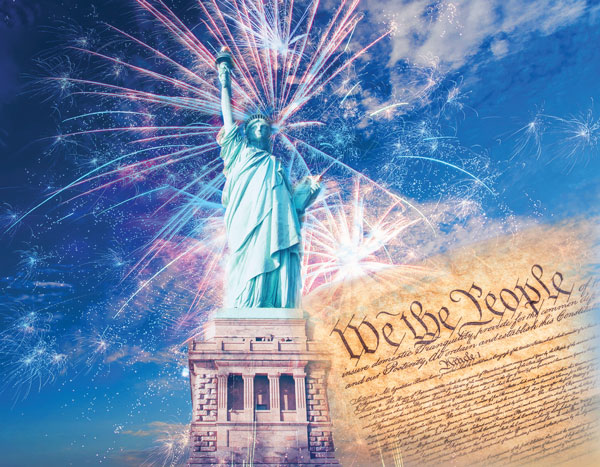The Charters of Freedom
By Lisa Nicklanovich
When we think of July, we often think of Independence Day. In addition to all the celebrations, fireworks and barbecues, July is a great opportunity to remind ourselves about the Charters of Freedom, the three documents which are considered instrumental to the founding and philosophy of the United States of America.
The Charters of Freedom include the Declaration of Independence, the Constitution, and the Bill of Rights.
The Declaration of Independence (July 4, 1776) is a historic document that formally explained why the Continental Congress voted, amid the American Revolutionary War, to declare independence from Great Britain. The document states at the end, “That these United Colonies are, and of Right ought to be Free and Independent States.”
Most Americans are more familiar with the beginning which states, “We hold these truths to be self-evident, that all men are created equal, that they are endowed by their Creator with certain unalienable rights, that among these are Life, Liberty and the pursuit of Happiness.”
Under America’s first national government, the Articles of Confederation (November 15, 1777), the states acted together only for specific purposes. Following the end of the American Revolutionary War, the Constitution (September 17, 1787) united citizens as members of one country and not just independent states. The Constitution contains the following introduction or preamble: “We the People of the United States, in Order to form a more perfect Union, establish Justice, insure domestic Tranquility, provide for the common defence, promote the general Welfare, and secure the Blessings of Liberty to ourselves and our Posterity, do ordain and establish this Constitution for the United States of America.”
There are seven articles that describe the way the government is structured and how it operates. The first three articles establish the three branches of government and their powers: Legislative (Congress), Executive (Office of the President), and Judicial (Federal Court System). A system of checks and balances prevents any one of these separate powers from becoming dominant. Articles four through seven describe the relationship of the states to the federal government, establish the Constitution as the supreme law of the land, and define the amendment and ratification processes.
Ratified in 1791 by three-fourths of the states, the Bill of Rights (December 15, 1791) is the first ten amendments to the Constitution. It added to the Constitution specific guarantees of personal freedoms and rights, clear limitations on the government’s power in judicial and other proceedings, and explicit declarations that all powers not specifically granted to the U.S. Congress by the Constitution are reserved for the states or the people. Amendments 11-27 were added between 1795 and 1992.
Nearly two and a half centuries later, these documents continue to provide the dynamic framework for freedom, law and personal rights for all Americans.
All three documents of the Charters of Freedom are housed in the Rotunda of the National Archives Museum in Washington, D.C. Visit www.museum.archives.gov/events.
